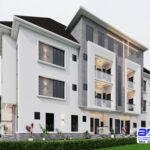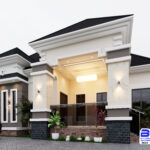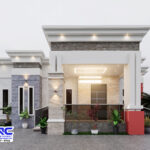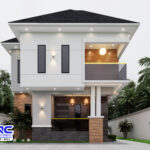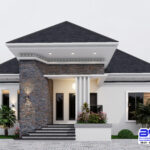Steel rods especially TMT (Thermo-Mechanically Treated) bars are critical materials in any concrete-based construction project.
Whether you’re building a small house or a high-rise structure in Nigeria, the quality of your steel rods directly affects the strength, durability, and safety of your building.
With the market flooded with various brands and even substandard or fake products, it’s crucial to know how to check steel rod quality before buying.
In this article, Bullionrise consult will walk you through practical steps you can take to ensure you’re getting value for your money and peace of mind for your project.
Table of Contents
ToggleSee also – How can you tell good quality TMT bars?

1. Check for Manufacturer’s Branding and Markings
Reputable manufacturers engrave their brand name, logo, size, and grade on each steel rod.
These markings are often repeated along the length of the rod.
What to look for:
- Brand name (e.g., Tiger TMT, African Foundries, Quantum Steels)
- Grade of steel (Fe-415, Fe-500, Fe-550, etc.)
- Diameter (e.g., 12mm, 16mm)
If the rods have no markings or unclear inscriptions, that’s a red flag. Walk away.
2. Verify Certification
Always ask your supplier for the following:
- SON (Standards Organisation of Nigeria) certification
- Mill test certificate or quality assurance document
- ISO certification (optional, but a good sign of international standard compliance)
These certifications indicate that the steel rods have been tested and meet national standards for strength, durability, and safety.
See also – What are the grades of TMT steel rods?
3. Inspect the Physical Appearance
Good quality steel rods should:
- Be free from rust, oil, or grease
- Have a consistent diameter throughout
- Possess well-defined ribs or ridges for strong bonding with concrete
Avoid rods with:
- Flaky rust
- Uneven thickness
- Bent or twisted ends
- Dull surface color (may indicate poor quality steel)
4. Perform a Bend Test
This is a simple on-site test:
- Take a sample rod and bend it at 90 or 180 degrees.
- A high-quality steel rod should bend without cracking.
- It should return partially to its original shape without breaking.
What it reveals: Ductility and flexibility are both important for resisting structural stress and earthquakes.
See also – What is the difference between mild steel and TMT bar?
5. Confirm the Weight and Diameter
Use a vernier caliper or micrometer to check the actual diameter of the rods.
Also, use a weighing scale to cross-check the weight per meter with standard charts.
For example:
- 12mm rod: approx. 0.89 kg/m
- 16mm rod: approx. 1.58 kg/m
- 20mm rod: approx. 2.47 kg/m
Undersized or underweight rods indicate poor-quality or counterfeit products.
6. Spark Test (Optional for Fabricators)
If you’re buying in bulk and have access to tools, a spark test can help detect impurities:
- When a rod is ground, bright and continuous sparks indicate good quality.
- Irregular or short sparks may mean poor-grade or recycled steel.
7. Buy From Reputable Suppliers or Dealers
Avoid roadside vendors or unverified sources. Always buy from:
- Authorized dealers
- Verified distributors
- Direct from manufacturers (if possible)
Ask around or check online reviews to confirm the reputation of the supplier.
See also – What are the different types of iron rods used in construction?
8. Consult Your Structural Engineer
Before making any steel purchase, always consult your structural engineer or builder.
They know exactly what grade, size, and quantity of rods your specific project requires.
Beware of Fake Steel Rods.
With rising demand, counterfeit TMT bars are becoming more common. These rods are usually:
- Undersized
- Made from scrap or recycled steel
- Poorly processed, with low tensile strength
Using fake steel could lead to cracks, collapses, or failure under stress.
Conclusion
Buying steel rods in Nigeria shouldn’t be a gamble.
By following the steps above, checking markings, testing strength, verifying certifications, and sourcing from trusted suppliers you can avoid costly mistakes and ensure your building stands the test of time.
Frequently asked questions
What certifications should I look for in steel rods in Nigeria?
Look for certifications like Standards Organisation of Nigeria (SON) and ISO to ensure the rods meet quality standards.
How can I visually inspect steel rods for quality?
Check for a smooth surface finish, uniform diameter, and absence of rust, grease, or paint.
Ensure the rods have proper brand markings.
What tests can I perform to check steel rod quality?
Conduct simple tests like the bend test, re-bend test, and mass per meter run test to verify strength and consistency.
How do I ensure the steel rods meet chemical composition standards?
Request a chemical test report from the supplier or manufacturer to confirm compliance with Nigerian standards.
What makes steel rods corrosion-resistant?
High-quality steel rods may have a uniform oxide layer or coatings like epoxy or zinc, which enhance durability in humid or coastal environments.



